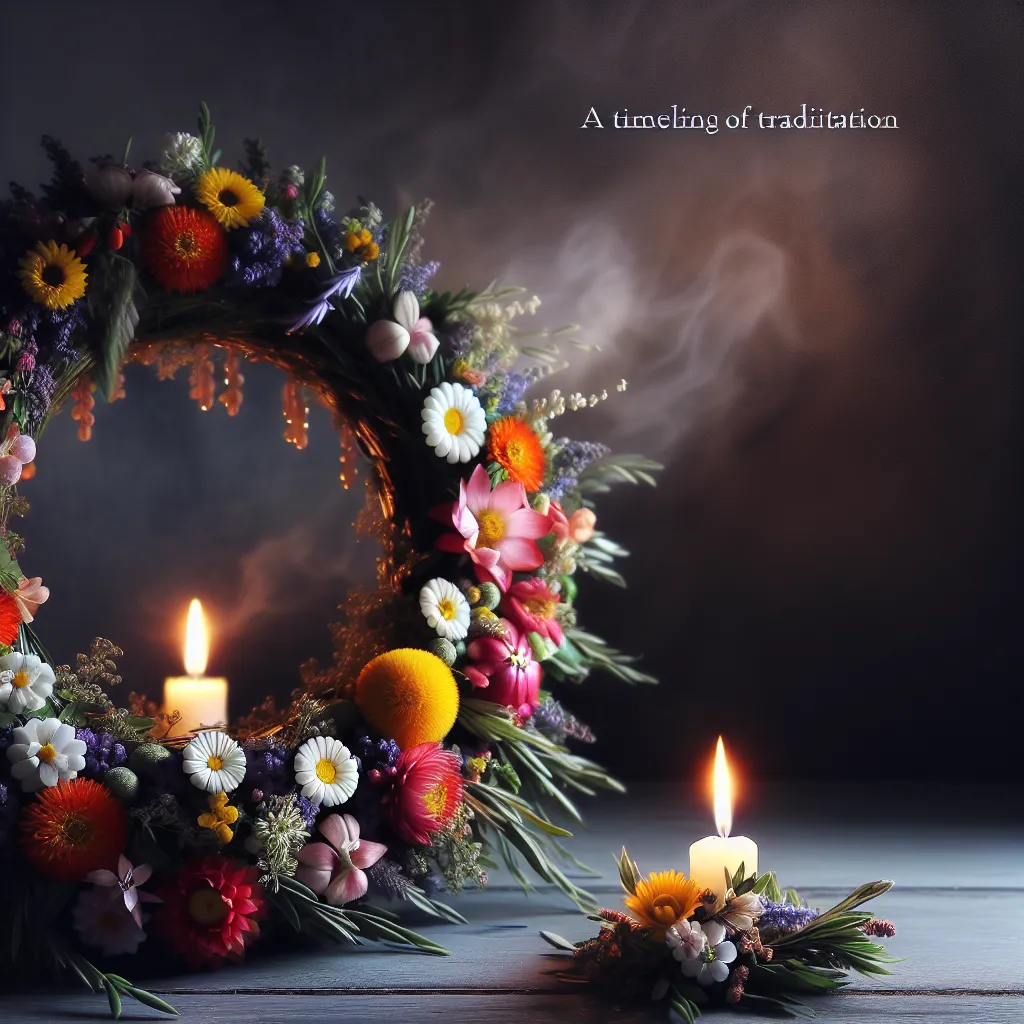The Evolution of Wreaths: From Ancient Rituals to Modern Traditions
Wreaths have a long and rich history that spans various cultures and time periods, evolving from ancient rituals to modern traditions. The use of wreaths dates back to ancient civilizations such as the Greeks and Romans, who would fashion them from greenery and adorn them with items symbolizing strength, victory, and immortality. These early wreaths held great significance in religious ceremonies, festivals, and as symbols of honor and power.
Over time, the tradition of wreath-making spread across different cultures, each imbuing the symbol with its own unique meanings and associations. In the Middle Ages, for example, Christians incorporated wreaths into their Advent celebrations, using evergreen wreaths with candles to symbolize Christ as the light of the world. Additionally, in Eastern Europe, wreaths were crafted and worn as decorative headdresses for folk dances and celebrations, symbolizing the unity and interconnectedness of communities.
As the centuries passed, the significance of wreaths continued to evolve. In the Victorian era, wreaths took on a more decorative role, adorning doors and mantels as a symbol of hospitality and goodwill. This tradition persists in modern times, with wreaths becoming synonymous with holiday decor and seasonal celebrations in many parts of the world.
Today, the art of wreath-making has seen a resurgence, with individuals creating and displaying wreaths for a variety of occasions beyond the traditional festive season. From weddings to funerals, and everything in between, wreaths have become a versatile form of expression, embodying themes of remembrance, celebration, and unity.
In conclusion, the evolution of wreaths from ancient rituals to modern traditions reflects their enduring significance as symbols of unity, continuity, and the cyclical nature of life. Understanding the rich history and cultural significance of wreaths enhances our appreciation for these timeless and versatile decorations.
Symbolism and Meaning: Unraveling the Significance of Wreaths in Different Cultures
Wreaths have been used as symbolic decorations in various cultures throughout history, each carrying its own unique meanings and significance. In ancient Greece, wreaths made from laurel leaves were awarded to victors in athletic competitions, symbolizing honor and achievement. Similarly, in Roman culture, wreaths were used to signify victory and were often worn as crowns during triumphal processions.
Meanwhile, in Celtic tradition, the circular shape of a wreath symbolized eternity and the interconnectedness of life. Wreaths woven from evergreen plants, such as holly and ivy, were particularly significant during winter celebrations, representing hope and renewal amidst the cold and dark months.
In Christianity, the Advent wreath, with its four candles representing the four weeks of Advent, signifies the anticipation and preparation for the birth of Jesus Christ. Each candle lit during the Advent season holds its own symbolic meaning, such as hope, love, joy, and peace.
Wreaths are also prominent in various cultural traditions, including the use of marigold wreaths during Dia de los Muertos in Mexico, symbolizing the cycle of life and death, and the use of floral wreaths in weddings in many cultures, representing love, commitment, and new beginnings.
Overall, the significance of wreaths transcends cultural boundaries, serving as powerful symbols of honor, victory, eternity, hope, and the interconnectedness of humanity, making them a timeless and meaningful decorative tradition.
Wreaths Through the Ages: Exploring the Historical Artistry and Cultural Relevance
Wreaths have been a significant part of human history for centuries, with evidence of their existence dating back to ancient civilizations such as the Greeks and Romans. These early wreaths were often crafted from plants, flowers, and other natural materials, signifying their close connection to nature and the changing seasons. The intricate artistry of wreath-making was highly esteemed, with skilled artisans creating elaborate designs that held special cultural and religious significance.
Throughout history, wreaths have held diverse meanings and have been used for various purposes. In ancient Greece, wreaths made from laurel leaves were awarded to victors in athletic competitions, symbolizing honor and achievement. Similarly, in ancient Rome, wreaths were used as a symbol of victory and were also worn at festivals and celebrations. The cultural significance of wreaths extended beyond Europe, with ancient civilizations in Asia and the Americas also incorporating wreaths into their traditions and rituals.
As time progressed, the artistry of wreath-making evolved, and the materials used became more diverse, incorporating elements such as ribbons, fruits, and decorative items. During the Victorian era, wreaths adorned with flowers and symbolic ornaments became a popular form of decoration, often displayed in homes during holidays and special occasions. This era also saw the emergence of funeral wreaths, symbolizing remembrance and eternity, a tradition that continues to this day.
Today, the tradition of wreath-making continues to thrive, with modern interpretations drawing inspiration from historical artistry while incorporating contemporary elements. Wreaths are not only used for decorative purposes but also as a form of expression and symbolism, reflecting the cultural, religious, and seasonal significance that has been intrinsic to wreaths through the ages.
In conclusion, the historical artistry and cultural relevance of wreaths have left an indelible mark on human history. From ancient civilizations to modern-day traditions, wreaths have served as powerful symbols, representing honor, celebration, remembrance, and the enduring connection between humanity and the natural world.

